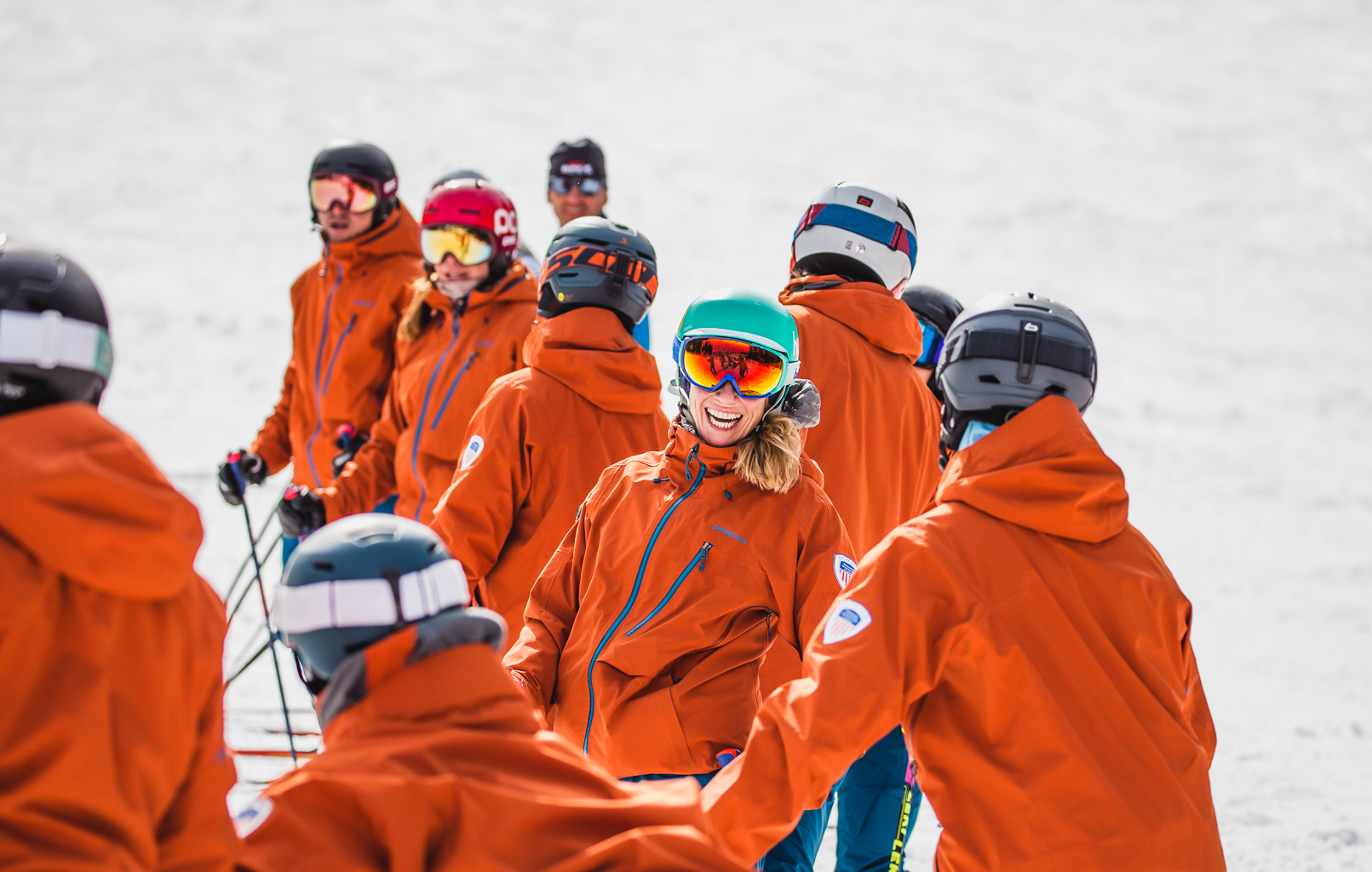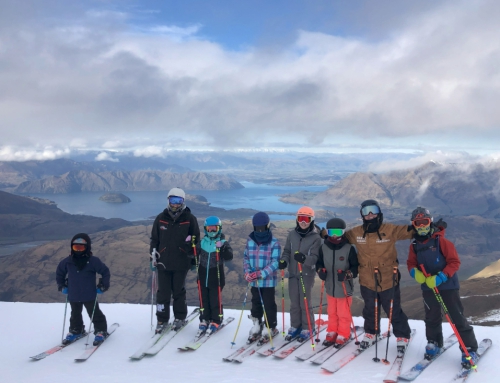Interski 2019 Day 4: Swedes, Surprises + Adaptive Synchronicity
At Interski, which occurs every four years in locations around the globe, you can expect to encounter certain themes – like new ways to improve your students’ technique, or a twist on experiential learning.
But it is the surprises—the “Wow, how come we didn’t think of that?” moments—that make Interski such a watershed event in the quadrennial calendar of snowsports education.
PSIA-AASI has certainly enjoyed their share of the spotlight in this regard, from the unveiling of the Skills Concept, the return of Telemark, or the introduction of the event’s first official snowboard team.
And Friday, the entire team will take to the snow and lecture rooms to deliver a multi-disciplinary presentation on the People, Technical, and Teaching Skills Model of The Learning Connection.
In the meantime, through dozens of other countries presentations, they have been keeping their eyes, ears, and minds open, studiously searching for new ideas and practices to incorporate into our lessons back home.
Here are just a few of the clinics and trends that have the team talking:

Swedish Teaching Tactics
Alpine Team member Brian Smith and PSIA-AASI Team Manager Jeb Boyd were especially impressed with a presentation from the Swedish Team that immediately engaged the students (or in this case, clinicians) with a simple, straightforward question, and instantly created an environment that was conducive to a successful lesson.
- “The question my group got was, ‘What do you do to start a turn?’” said Smith. “That question started a conversation, and we were all completely engaged in the lesson. By asking guests what they would do, you are inviting their participation.”
- Boyd said, “The question I got was, ‘How do you put a ski on edge?’ When you described what happened, they immediately worked with that, and incorporate what you said—and how you said it—into the feedback they provided. They use your language in the explanation.”
- For both team members, the takeaway was that by recognizing how intuitive people already are, instructors can create a dynamic, interactive environment while also removing the stigma of “taking a lesson.”

BASI’s Reflective Learning
Snowboard Team member Eric Rolls joined a clinic lead by the British Association of Snowsports Instructors (BASI) where after the member presented, they invited honest feedback—from 30 other clinicians! Even more surprising, Rolls said, was that it was an afternoon session, and the presenter had already incorporated the feedback he received from giving the same presentation in the morning.
- “It set up a scenario where the member who presented had to be brave, and vulnerable, to accept the feedback he was receiving,” Rolls said, adding that it also helped them understand the possible mindset of their students.
- Rolls said the presenter also asked for specific feedback on elements of the presentation, “Like whether or not the technical section was too long.” He said, “It was really impressive to see him put himself out there, and be ready to process the information he received.”
- To add another layer, Rolls said BASI uses this drill in their training. At this level, and to hold all the participants accountable, the members conducting the review are also scored on the feedback they provide.

Independence, the Evolution of Adaptive Teaching
When PSIA-AASI Adaptive Team members Geoff Krill and Josh Spoelstra led a joint presentation with BASI at Pamporovo, it wasn’t the collaboration that was so unique as much as the audience. Other countries had come to Interski with their own adaptive teams. Often Krill and Spoelstra are the sole designated adaptive advocates at the event, but here in Bulgaria the pair found a growing pool of adaptive instructors, and athletes, for collaboration.
- “We’ve never had a group of adaptive instructors this big before,” said Krill. “In the past, you might have one instructor from Australia getting into a sit-ski just to show that adaptive was part of their program. But here, you can see how other countries really are committing to adaptive teaching.”
- According to Spoelstra, it’s apparent how much the content PSIA-AASI has created, is informing how other countries develop their own adaptive programs. He said, “More than once, when we’ve been at another country’s presentation, we get that look to see if we agree with what they’re saying.”
- The goal for these programs is for their students to achieve independent, autonomous skiing and riding. “It’s the basic skills that will allow that to happen,” Krill said. “To build that foundation for independence, you have to begin with the core fundamentals of skiing and riding.”
For more insights on Interski, listen to PSIA Alpine Team member Ryan Christofferson talk about Interski Ski School in First Chair podcasts (available on iTunes, Google Podcasts, or Soundcloud).
Get daily Interski 2019 updates here – with more news, photos, podcasts, and videos posted every day this week.
You can also follow PSIA-AASI’s official social media channels for real-time updates, daily news, videos, and pictures. Follow Facebook, Twitter, Instagram, and YouTube.







